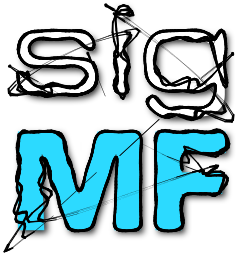Welcome to the SigMF project! The SigMF specification document is the
sigmf-spec.md file in this repository:
Signal Metadata Format Specification
Sharing sets of recorded signal data is an important part of science and engineering. It enables multiple parties to collaborate, is often a necessary part of reproducing scientific results (a requirement of scientific rigor), and enables sharing data with those who do not have direct access to the equipment required to capture it.
Unfortunately, these datasets have historically not been very portable, and there is not an agreed upon method of sharing metadata descriptions of the recorded data itself. This is the problem that SigMF solves.
By providing a standard way to describe data recordings, SigMF facilitates the sharing of data, prevents the "bitrot" of datasets wherein details of the capture are lost over time, and makes it possible for different tools to operate on the same dataset, thus enabling data portability between tools and workflows.
(Taken from the Introduction of the specification document.)
The SigMF standards effort is organized entirely within this Github repository. Questions, suggestions, bug reports, etc., are discussed in the issue tracker. Changes to the specification only occur through Pull Requests.
This ensures that the history and background of all discussions and changes are maintained for posterity.
Anyone is welcome to get involved - indeed, the more people involved in the discussions, the more useful the standard is likely to be.
This module can be installed the typical way:
pip install .import sigmf
handle = sigmf.sigmffile.fromfile('example.sigmf')
handle.read_samples() # returns all timeseries data
handle.get_global_info() # returns 'global' dictionary
handle.get_captures() # returns list of 'captures' dictionaries
handle.get_annotations() # returns list of all annotationssigmf_validate example.sigmf from sigmf import SigMFFile, sigmffile
# Load a dataset
filename = 'logo/sigmf_logo' # extension is optional
signal = sigmffile.fromfile(filename)
# Get some metadata and all annotations
sample_rate = signal.get_global_field(SigMFFile.SAMPLE_RATE_KEY)
sample_count = signal.sample_count
signal_duration = sample_count / sample_rate
annotations = signal.get_annotations()
# Iterate over annotations
for adx, annotation in enumerate(annotations):
annotation_start_idx = annotation[SigMFFile.START_INDEX_KEY]
annotation_length = annotation[SigMFFile.LENGTH_INDEX_KEY]
annotation_comment = annotation.get(SigMFFile.COMMENT_KEY, "[annotation {}]".format(adx))
# Get capture info associated with the start of annotation
capture = signal.get_capture_info(annotation_start_idx)
freq_center = capture.get(SigMFFile.FREQUENCY_KEY, 0)
freq_min = freq_center - 0.5*sample_rate
freq_max = freq_center + 0.5*sample_rate
# Get frequency edges of annotation (default to edges of capture)
freq_start = annotation.get(SigMFFile.FLO_KEY)
freq_stop = annotation.get(SigMFFile.FHI_KEY)
# Get the samples corresponding to annotation
samples = signal.read_samples(annotation_start_idx, annotation_length)import datetime as dt
from sigmf import SigMFFile
from sigmf.utils import get_data_type_str
# suppose we have an complex timeseries signal
data = np.zeros(1024, dtype=np.complex64)
# write those samples to file in cf32_le
data.tofile('example.sigmf-data')
# create the metadata
meta = SigMFFile(
data_file='example.sigmf-data', # extension is optional
global_info = {
SigMFFile.DATATYPE_KEY: get_data_type_str(data), # in this case, 'cf32_le'
SigMFFile.SAMPLE_RATE_KEY: 48000,
SigMFFile.AUTHOR_KEY: 'jane.doe@domain.org',
SigMFFile.DESCRIPTION_KEY: 'All zero example file.',
SigMFFile.VERSION_KEY: sigmf.__version__,
}
)
# create a capture key at time index 0
meta.add_capture(0, metadata={
SigMFFile.FREQUENCY_KEY: 915000000,
SigMFFile.DATETIME_KEY: dt.datetime.utcnow().isoformat()+'Z',
})
# add an annotation at sample 100 with length 200 & 10 KHz width
meta.add_annotation(100, 200, metadata = {
SigMFFile.FLO_KEY: 914995000.0,
SigMFFile.FHI_KEY: 915005000.0,
SigMFFile.COMMENT_KEY: 'example annotation',
})
# check for mistakes & write to disk
assert meta.validate()
meta.tofile('example.sigmf-meta') # extension is optionalNo, this is not a GNU Radio-specific effort. It is hosted under the GNU Radio Github account because this effort first emerged from a group of GNU Radio core developers, but the goal of the project to provide a standard that will be useful to anyone and everyone, regardless of tool or workflow.
No, similar to the response, above, the goal is to create something that is generally applicable to signal processing, regardless of whether or not the application is communications related.
Yes, and in most cases this is by design. Since the goal of this project is create a broadly useful standards document, it is in our best interest to make sure we gather and consider as many opinions as possible, and produce the clearest and most exact language possible. This necessarily requires extreme attention to detail and diligence.
